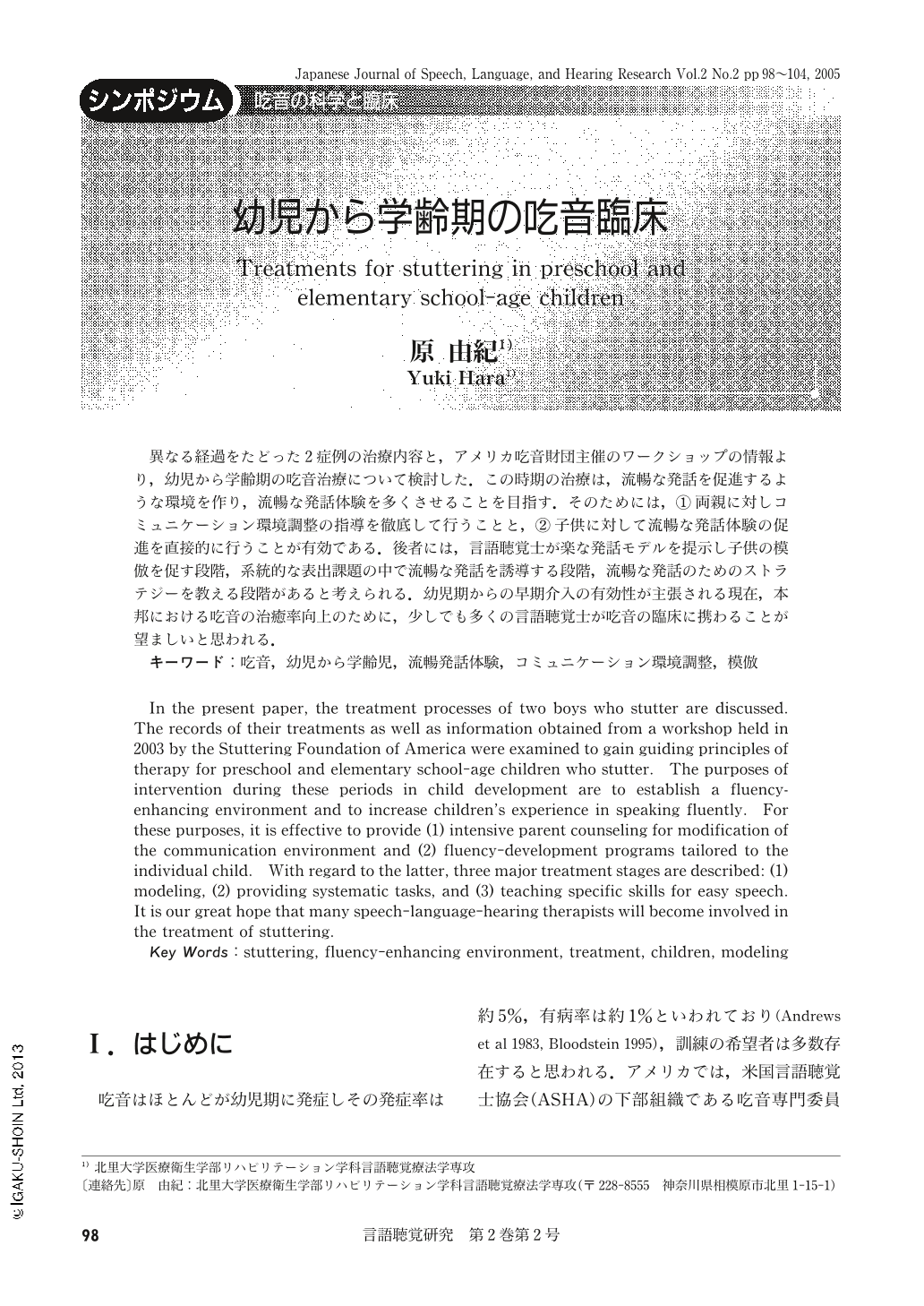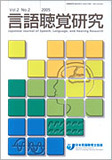Japanese
English
- 有料閲覧
- Abstract 文献概要
- 1ページ目 Look Inside
- 参考文献 Reference
- サイト内被引用 Cited by
異なる経過をたどった2症例の治療内容と,アメリカ吃音財団主催のワークショップの情報より,幼児から学齢期の吃音治療について検討した.この時期の治療は,流暢な発話を促進するような環境を作り,流暢な発話体験を多くさせることを目指す.そのためには,①両親に対しコミュニケーション環境調整の指導を徹底して行うことと,②子供に対して流暢な発話体験の促進を直接的に行うことが有効である.後者には,言語聴覚士が楽な発話モデルを提示し子供の模倣を促す段階,系統的な表出課題の中で流暢な発話を誘導する段階,流暢な発話のためのストラテジーを教える段階があると考えられる.幼児期からの早期介入の有効性が主張される現在,本邦における吃音の治癒率向上のために,少しでも多くの言語聴覚士が吃音の臨床に携わることが望ましいと思われる.
In the present paper, the treatment processes of two boys who stutter are discussed. The records of their treatments as well as information obtained from a workshop held in 2003 by the Stuttering Foundation of America were examined to gain guiding principles of therapy for preschool and elementary school-age children who stutter. The purposes of intervention during these periods in child development are to establish a fluency-enhancing environment and to increase children's experience in speaking fluently. For these purposes, it is effective to provide (1) intensive parent counseling for modification of the communication environment and (2) fluency-development programs tailored to the individual child. With regard to the latter, three major treatment stages are described: (1) modeling, (2) providing systematic tasks, and (3) teaching specific skills for easy speech. It is our great hope that many speech-language-hearing therapists will become involved in the treatment of stuttering.

Copyright © 2005, Japanese Association of Speech-Language-Hearing Therapists. All rights reserved.


